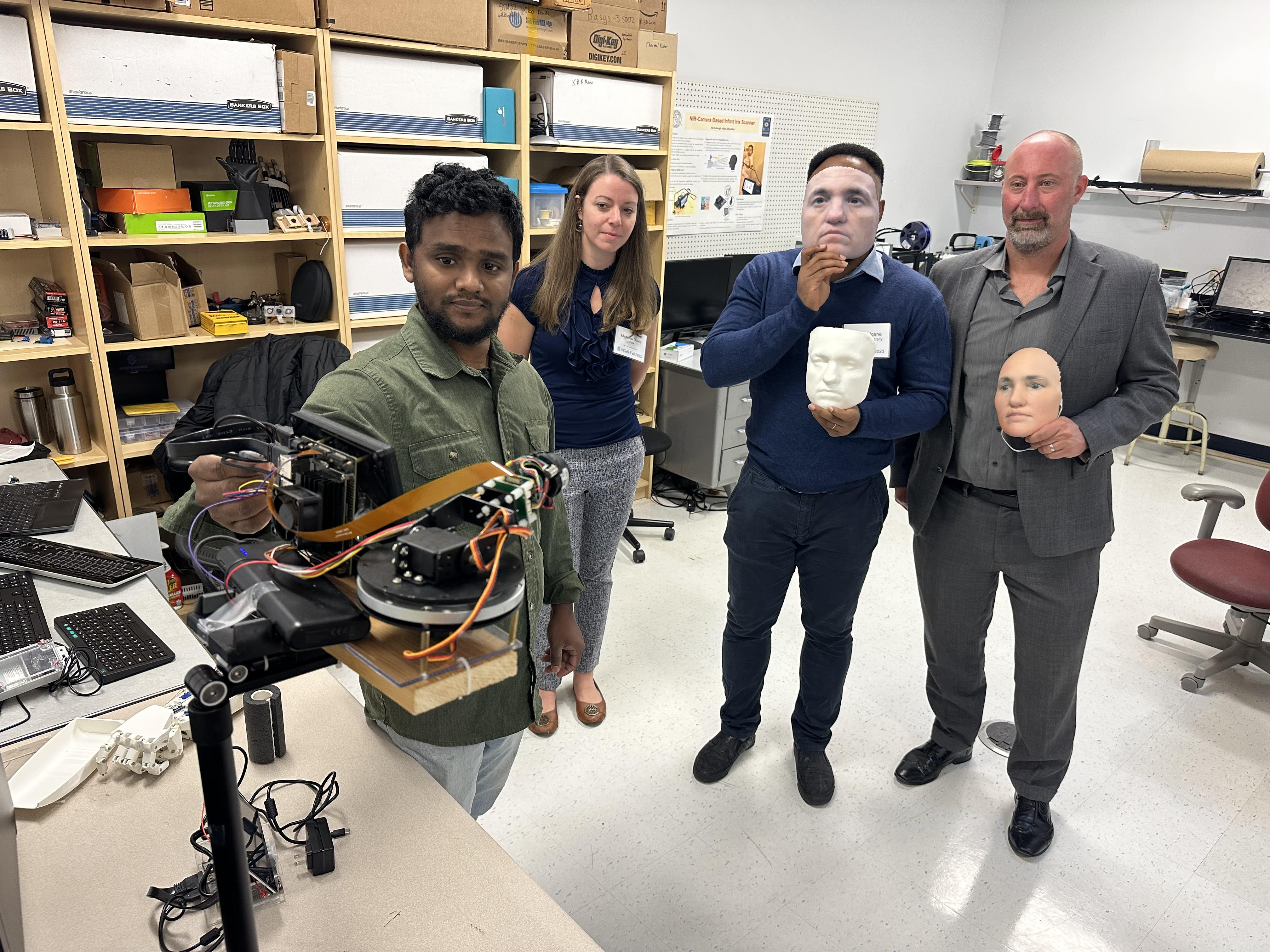Challenges in AI discussed at Clarkson University with Industry and Government Stakeholders as Part of the Center for Identification Technology Research (CITeR)
With the tremendous growth of Artificial Intelligence (AI) and the potential threat of deepfakes in our communities, a unique group of stakeholders met at Clarkson University to discuss challenges and research next-generation solutions.

The Center for Identification Technology Research (CITeR) welcomed government and industry partners from around the country to review CITeR research occurring in the areas of biometric identity, deepfakes, and security.
Deepfakes threaten financial, social, and political organizations as well as individuals, through identity theft, social engineering, and exploitation. Solutions are needed to recognize and combat deepfakes to safeguard people and institutions against fraudulent activities.
The group engaged in research discussions surrounding the equity of systems that rely on AI and automated decisions. Presenters and participants emphasized the idea that systems need to be designed to combat bias from the beginning to avoid creating issues for end users.
A keynote speaker addressed the audience on the theme of “Identity in the Era of Generative AI,” providing insight into the evolving landscape. Additionally, a Panel and Demo Event offered Clarkson and CITeR students an opportunity to hear career path stories from Affiliate members in government and industry.
Government affiliates in attendance included representatives from the Department of Defense (DoD) Defense Forensics and Biometrics Agency (DFBA), a longtime CITeR affiliate. Ryan Triplett, management analyst for DFBA and Michelle Davis, a research analyst, said the bi-annual meetings are beneficial in seeing research come full circle. It also allows a fresh look at some of the problems the industry is looking to solve.
“We have graduate students and PhD students who have a fresh perspective on research than those that have been in the biometric field for 20 years,” Triplett said. “So having a fresh vision is always important to innovation. When it comes to biometrics, one of our top priorities is modernization and becoming more data-centric, within the Department of Defense Biometric Enterprise this is very important to us.”
Davis pointed out that the meeting is a chance for collaborative discussion, and also values the opportunity to help motivate students with real-world engagement.
“You have the research from academia, and then the affiliates that are here from industry and government. So we have that cross-talk and you're able to see how the research transitions into future capabilities,” Davis said. “It's great to be able to give back and to give the students this experience and the ability to present these projects to the end users. I think it's a great way to build the skills that they could then transfer later, through their professional careers.”
Stephanie Schuckers, Director of the Center for Identification Technology Research (CITeR) and Paynter-Krigman, Endowed Professor in Engineering Science at Clarkson University, echoed Davis’ sentiment and said the experience the students gain is invaluable.
“The students are the core of what we do. The faculty are guiding, but the majority of the work and the funding goes towards those students,” Schuckers said. “Students talk to me about how this opportunity to be fully engaged with the stakeholders that will utilize the research down the line makes a huge difference.”
CITeR is the only National Science Foundation (NSF) Industry/University Cooperative Research Center (IUCRC) focusing on serving its affiliates in the rapidly growing areas of identity science and biometric recognition through an interdisciplinary group of faculty, researchers, and students. Clarkson University is the lead site for the center, which also includes Michigan State University, West Virginia University, University at Buffalo, and IDIAP, an international university partner located in Switzerland.
For more information about CITeR, visit citer.clarkson.edu.
